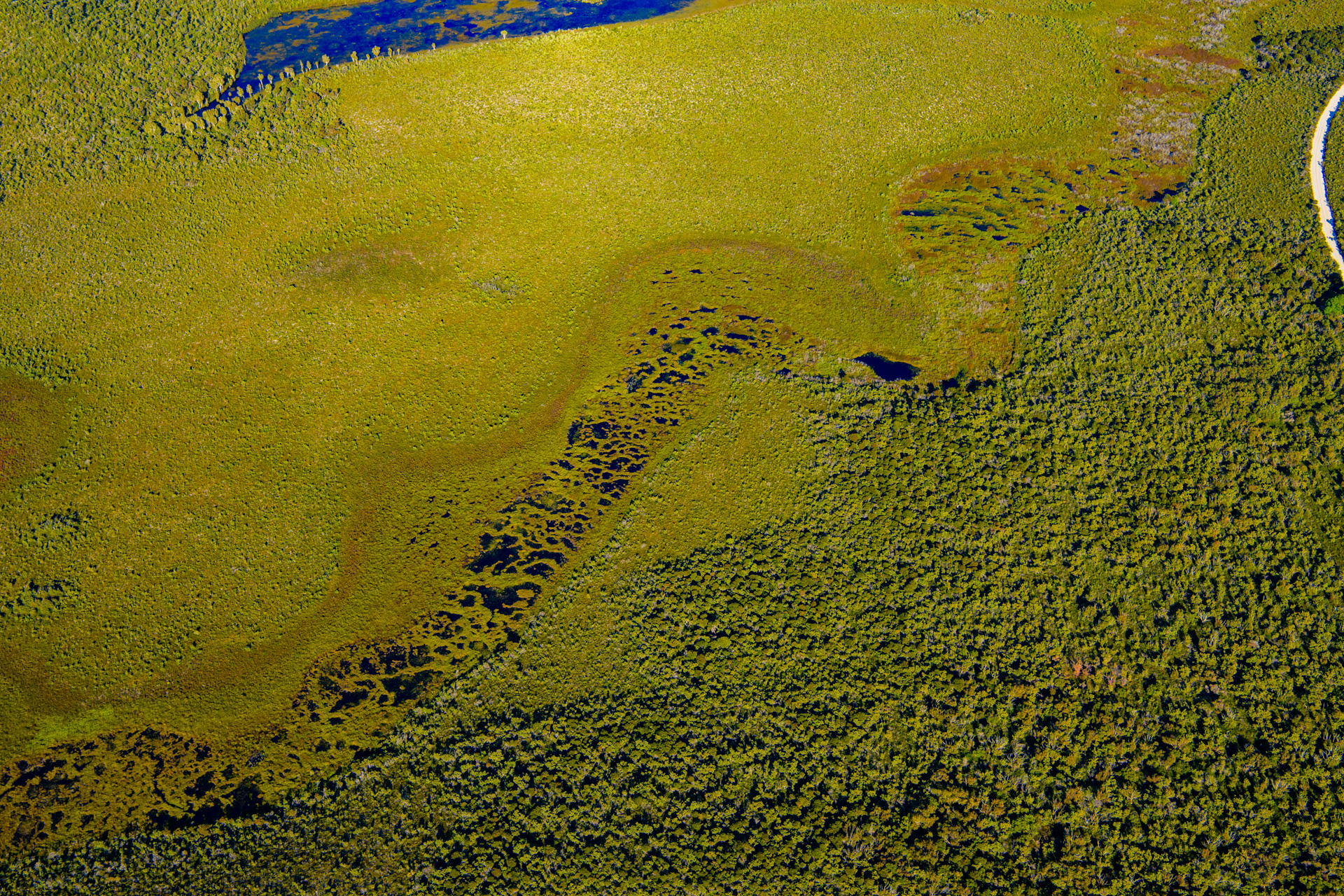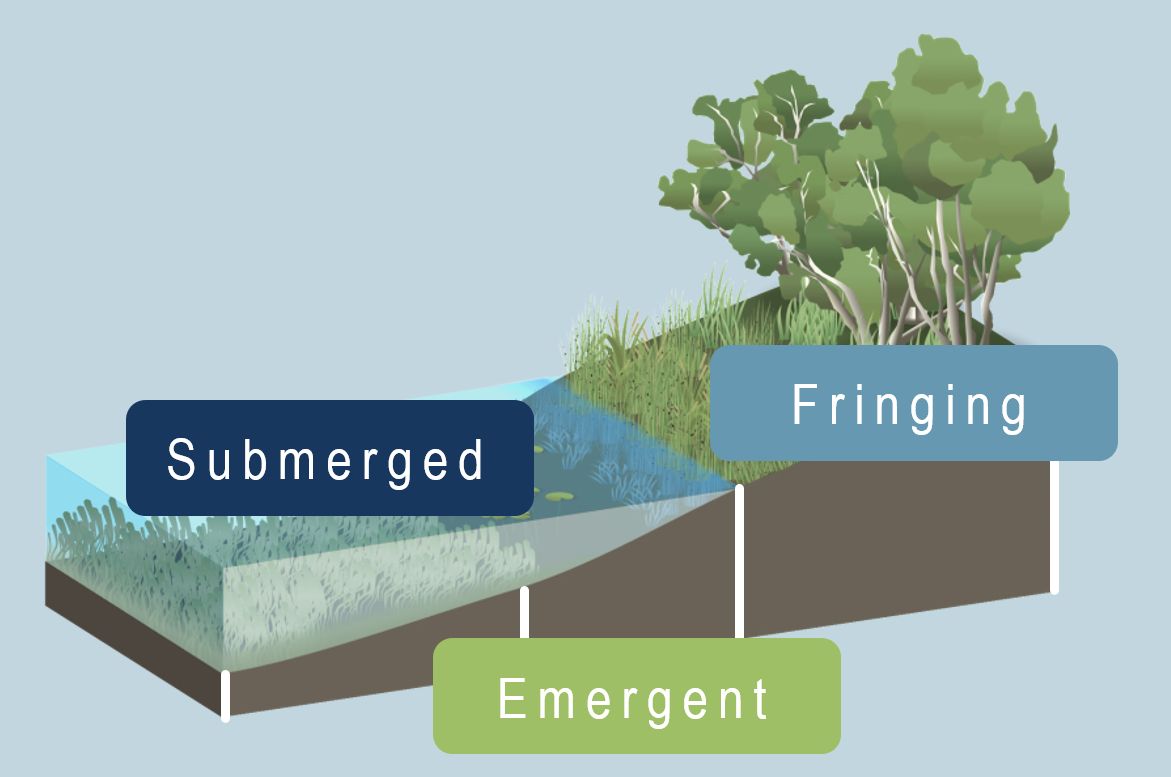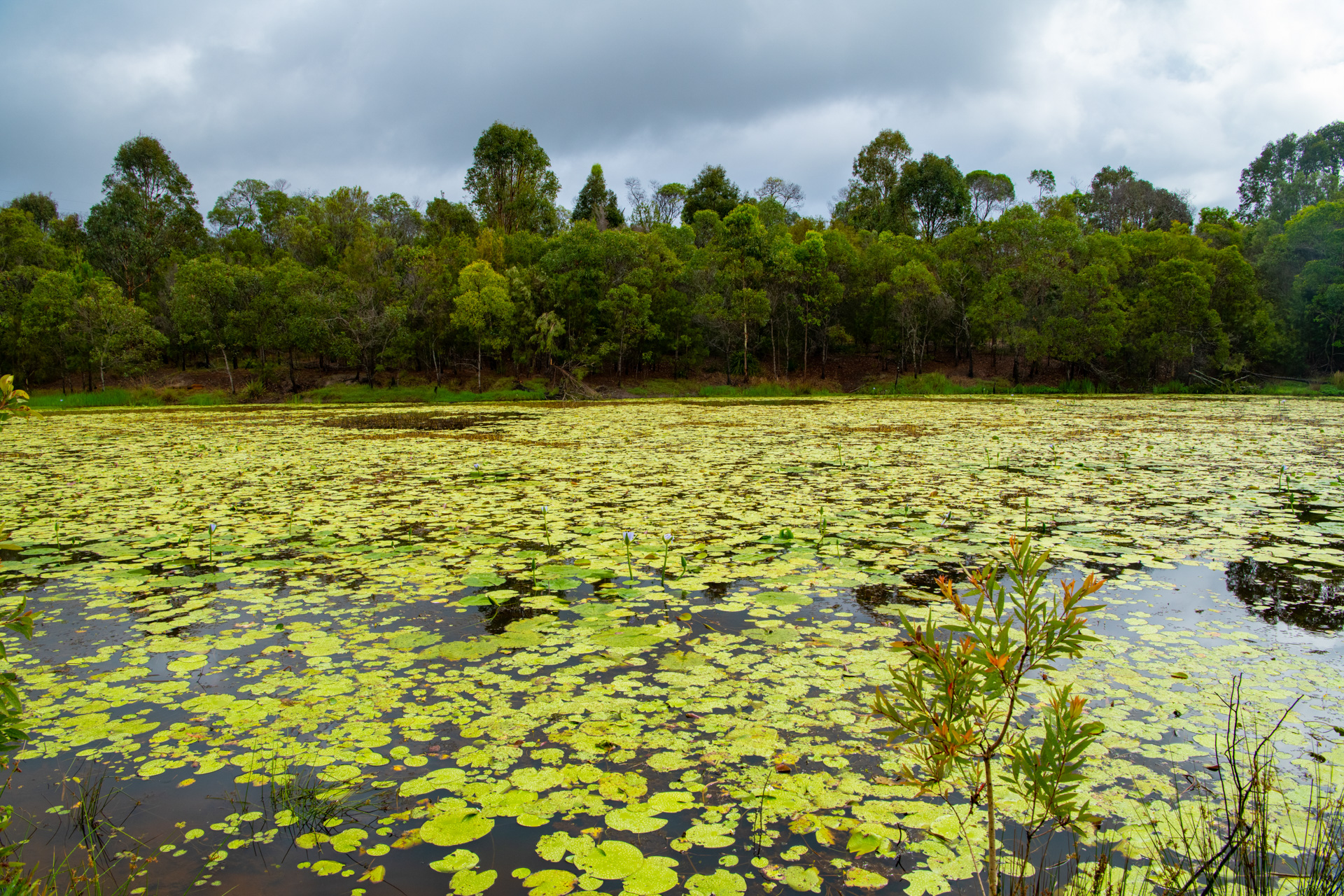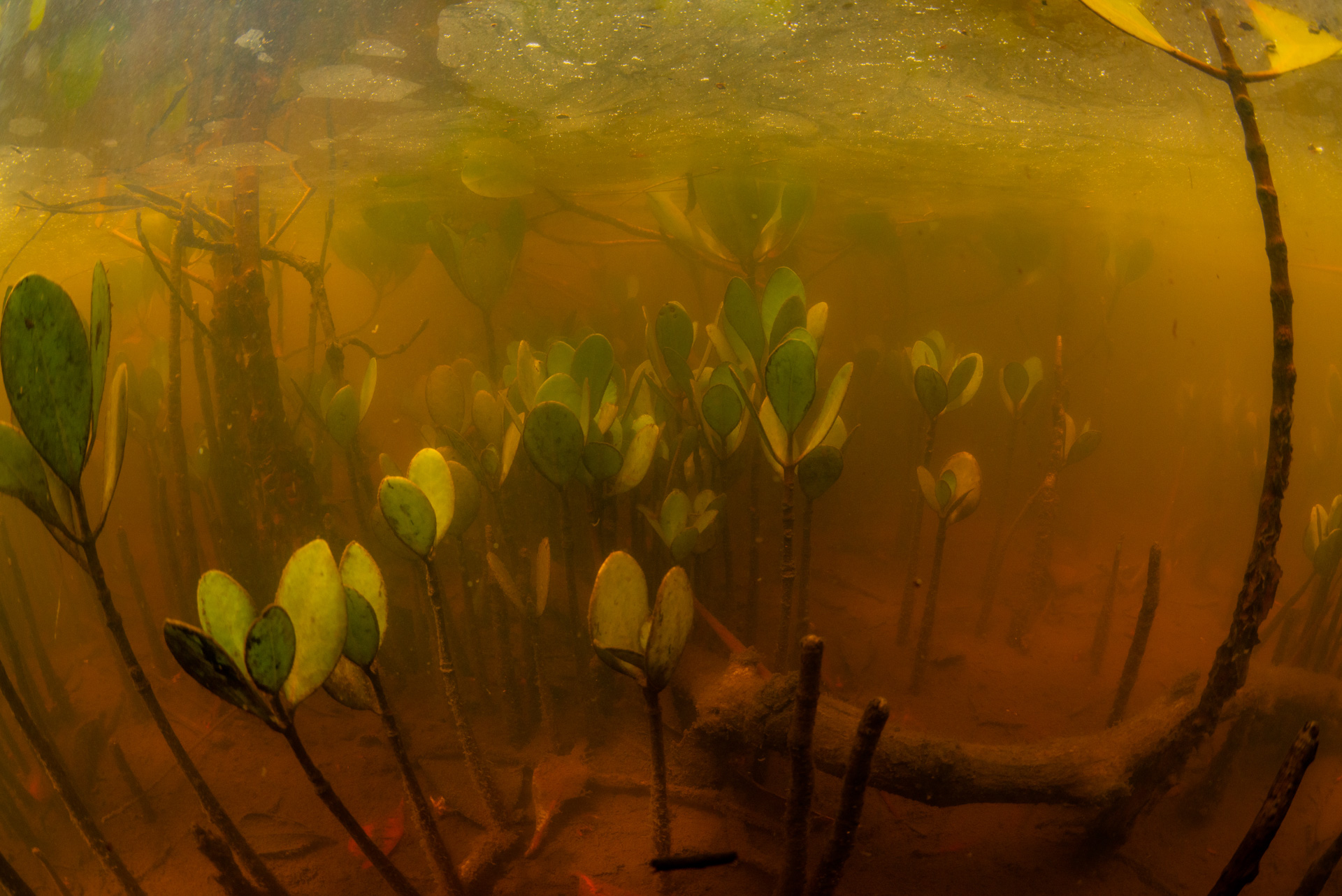|
|
Flora StructureStructural flora refers to plants or groups of plants that provide structure to the surrounding environment. Plants that grow in wetlands include mangroves, seagrasses, saltmarsh, rushes, macrophytes such as lilies, sedges, swamp oak and melaleuca. As these plants grow, their roots provide structure to the surrounding soils and environment, prevent erosion[5], and can promote accretion, sometimes even creating new islands. The structure of the plant above ground provides shelter and habitat allowing different plants and animals to colonise. This increases the complexity of habitats and provides food sources for many organisms. Vegetation structure can also help to delineate different zones within a wetland. The structural properties of flora are useful for characterising and mapping wetland ecosystems and as a condition indicator. Measures include the growth form i.e. its ecologically dominant layer (e.g. trees, shrubs, ground cover) and the percentage cover for each layer. Usually vegetation is above the substrate, but structure below the substrate, such as rootmasses and peat, is equally as important for stabilising the substrate and sequestering carbon. For wetland vegetation, plants that are beneath the surface of the water exist in the submerged zone (see Figure 1). Vegetation that is predominantly on or above the water surface are in the emergent zone. Vegetation that fringes the water body and is intermittently inundated are in the riparian/fringing zone. Structural flora in freshwater wetland ecosystems grow in different shapes and forms. Structural growth forms include trees, shrubs and ground cover. The different growth forms may form different layers or strata. Wetlands may be characterised by their most significant or ‘ecologically dominant layer’ – for example a Melaleuca wetland is a treed wetland. Treed wetlands have a canopy layer and the trees may be spaced apart or closer together so their canopies touch each other and shade the understorey. Some taller trees may emerge from the canopy. A shrub layer may be present as an understory below the canopy or may exist without a tree layer at all. Beneath the other layers may be a ground cover layer such as grasses, herbs, sedges and other small plants. Some wetland types consist only of ground cover, such as sedges and grasses[4]. Sedges can be particularly important structural plants in wetlands especially when they create a dense peat layer. For example in patterned fens the Empodisma rush grows upward, creating ridges of matted organic matter with pools between that form a tesselated pattern when viewed from above[2]. Mangroves are also an emergent plant that builds up dense organic matter in the soil and the roots of mangroves stabilises soil. The above ground form of the mangrove, such as the pneumatophores and stems of mangroves, provide hard structure for other organisms like sponges and oysters to colonise[3]. The leaves of seagrasses, lillies and other aquatic flora provide shelter, habitat, and food for many aquatic organisms. The density of structural flora in wetlands (cover) is important for wetland function and for determining the type of wetland. For example, gallery rainforest canopies form a shady canopy over creeks where the Mary River Cod is found[1]. Mangrove structures differ from one genus to another, mainly by their root form. For example, the grey mangrove Avicennia has peg roots, the red mangrove Rhizophora has prop roots and yellow mangrove Ceriops has buttress roots. These different root systems all provide different habitats for fauna. Seagrasses vary in their leaf structure between strap, fern and ovoid shapes, but much of their biomass is beneath the substrate as rhizomes, the preferred food for dugong[6]. Macrophytes are aquatic plants that are large enough to be see with the naked eye and can be emergent, submerged or floating. Submerged plants spend their entire life cycle underwater, apart from species that flower above the water surface. Most are rooted in sediment, but some float freely within the water coloumn. Some submerged plants such as seagrasses form meadows underwater and include other structural macrobiota such as encrusting algae, erect marcophyte algae, bryozoans, sponges and molluscs[5]. Emergent plants in a wetland are rooted in soil and their base is often under the surface of the water and their leaves, upper stems, flowers and fruit grow above the water. Some emergent plants, such as Melaleuca, have spreading root systems that provide stability during floods and prolonged waterlogging. Floating-leaved plants have leaves that float on the water's surface. Species such as Nymphaea, (waterlillies), can shade the water in wetlands and reduce water loss by evaporation and reduce the water temperature which can help keep the level of dissolved oxygen stable. They can also outcompete submerged plants for light. Floating plants have both the leaves and stems floating on the water's surface and their roots hanging freely and not anchored in soil. They reproduce by producing smaller plants at the end of long stems, which allows for the floating plant species to rapidly cover the water's surface and reduces light availability in the water column. In Queensland, some floating plants are pest species such as water hyacinth, water lettuce and hymenache grass which can block waterways and reduce flow capacity. Structural flora can be used to stabilise riverbanks and shorelines. Riparian zones can be planted out with species that are tolerant to wet or waterlogged conditions. In intertidal areas, plants should be selected for their tolerance to salty environments. Structural flora provides a buffer to protect riverbanks and shorelines from natural events such as floods, storms and cyclones. By maintaining or improving structural flora in wetlands, riverbanks and shorelines can be stabilised while promoting biodiversity and natural processes[4]. Pages under this sectionReferences
Last updated: 15 September 2023 This page should be cited as: Department of Environment, Science and Innovation, Queensland (2023) Flora Structure, WetlandInfo website, accessed 8 May 2025. Available at: https://wetlandinfo.des.qld.gov.au/wetlands/ecology/components/biota/flora/flora-structural/ |

 — Department of the Environment, Tourism, Science and Innovation
— Department of the Environment, Tourism, Science and Innovation





